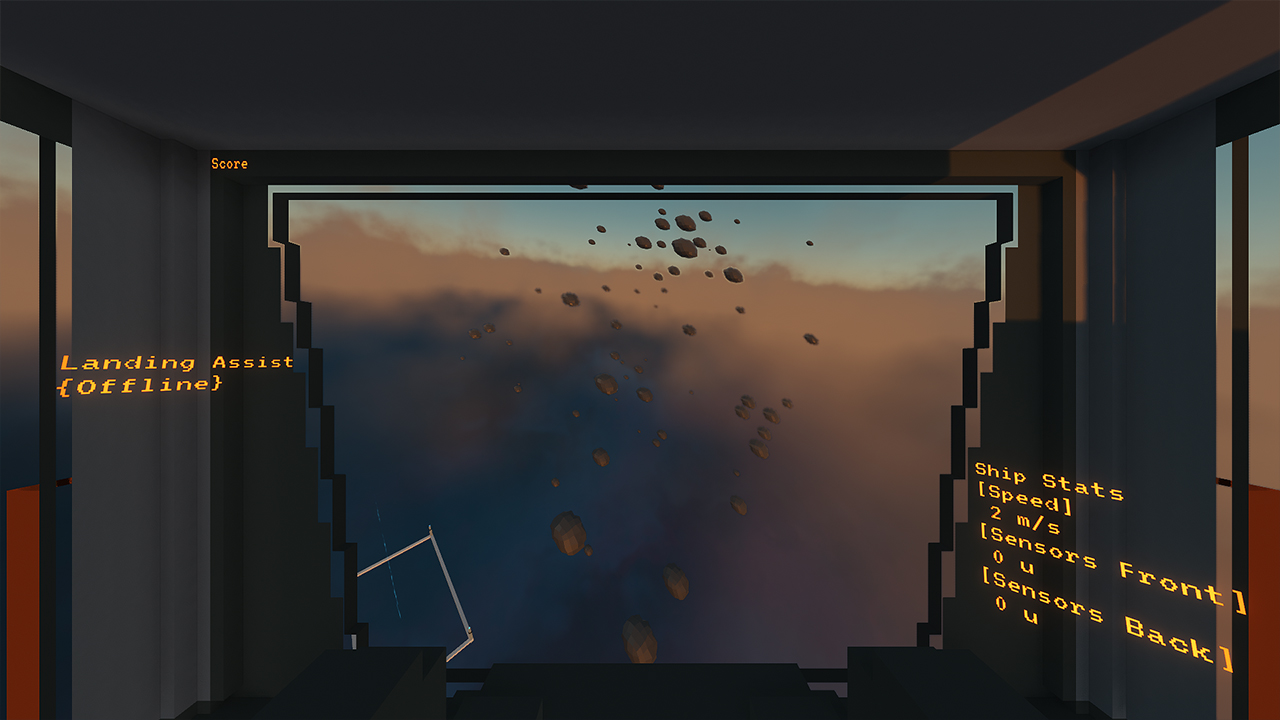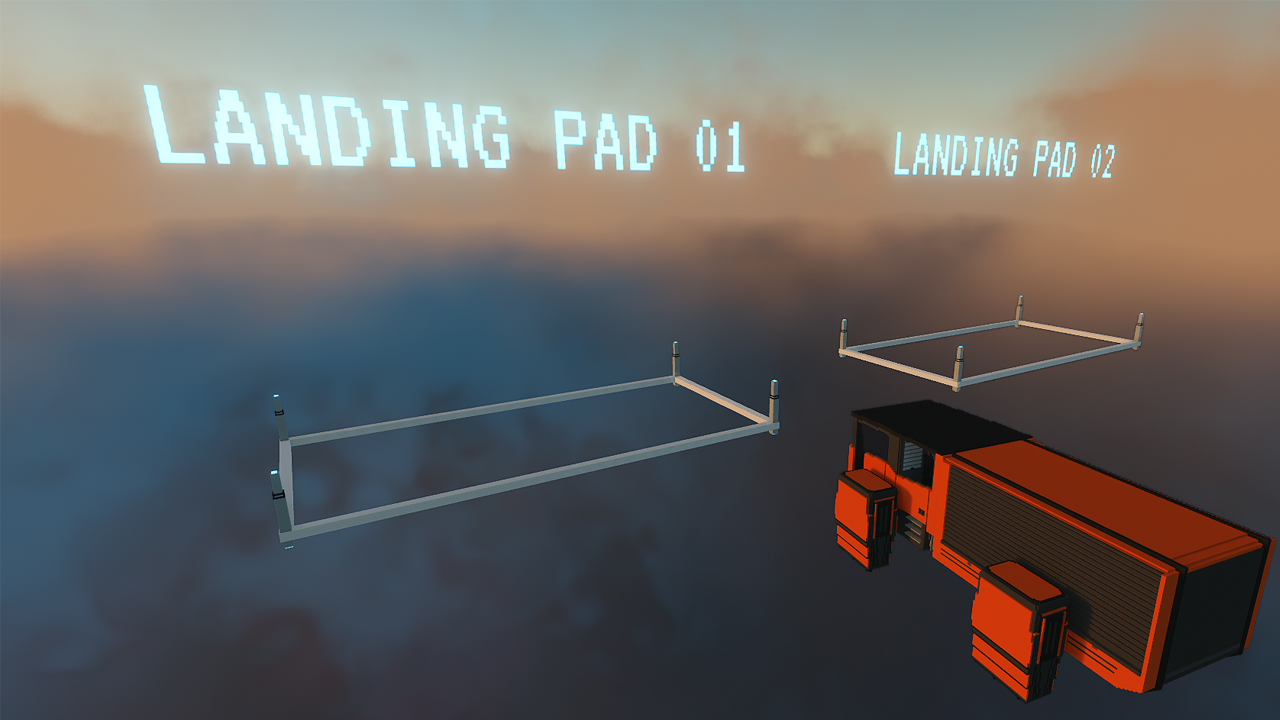Story
This is a tech demo, where I explore game mechanics.
Game Systems:
- Spaceship Controller
- Spaceship Landing Assist
- Car Controller
- Asteroids Spawner
- Air Traffic Controller
Features
Spaceship Controller
To move the spaceship the player can use the following keys:
| [W] | Forward thrust |
| [S] | Backward thrust |
| [A] | Strafe left |
| [D] | Strafe right |
| [SPACE] | Strafe up |
| [LCTRL] | Strafe down |
| [E] | Roll to the right |
| [Q] | Roll to the left |
| [R] | Braking Mode (adds drag to the spaceship, making the spaceship slow down if doesn't have other forces being applied) |
| [N] | Request landing pad to the air traffic controller / Enables landing assist HUD |
| [ENTER] | Submit position, tells the score |
| [0] | Enable/Disable debug UI |
Spaceship Landing Assist
Helps the player land the spaceship by displaying the distance and rotation alignment to the landing pad.
[Code] Score calculation:
// File: ShipParkingAssist.cpp
float ShipParkingAssist::GetLandingScore() const
{
float finalScore = 0.0f;
// Time spent in the game
const float time = Game::getTime();
const Math::Mat4 landingTransform = m_LandingZone->getNode()->getTransform();
const Math::Mat4 shipTransform = m_ShipBody->getTransform();
// Calculate the alignment values
const float dotPitch = Math::dot(shipTransform.getAxisX(), landingTransform.getAxisX());
const float dotRoll = Math::dot(shipTransform.getAxisY(), landingTransform.getAxisY());
const float dotYaw = Math::dot(shipTransform.getAxisZ(), landingTransform.getAxisZ());
const float rotationScore = dotYaw + dotPitch + dotRoll;
finalScore = rotationScore + distance + time;
// Invert the result so the higher number is the best score
finalScore = (1.0f / finalScore) * m_ScoreMultiplier;
return finalScore;
}
Asteroids Spawner

A small system to spawn asteroids in random positions with collision prevention
[Code] Parameters to customize the spawn:
// File: AsteroidsSpawner.h
PROP_PARAM( Float, m_RadiusArea , 250.0f)
PROP_PARAM( Int, m_MaxRandomTries , 10)
PROP_PARAM( Int, m_AsteroidsToGenerate , 80)
PROP_PARAM( Float, m_MinScale , 1.0f)
PROP_PARAM( Float, m_MaxScale , 8.0f)
PROP_PARAM(String, m_AsteroidNode , "nodes/defaultAsteroid.node")
To spawn the asteroids, first I generate random positions within the max radius, then generate random scales within the min and max scale values.
When I have the position and the scale they are stored inside a list.
In this case, it's done 80 times (number of asteroids to generate), start spawning asteroids in the world. Now they are in the world, so it means time to clear the list data (positions and scales).
Mini Air Traffic Controller

The Air Traffic Controller has a list of landing zones. Every time a spaceship wants to land, a landing zone request is detected.
After that the ATC finds an available landing zone with the correct ship size and assigns that landing zone to the spaceship.